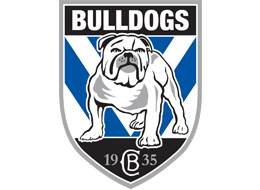Stem Cell Therapy: A Regenerative Approach in Sports Medicine
What is Stem Cell Therapy?
Stem cell therapy is an advanced regenerative treatment that aims to repair damaged tissues, reduce inflammation, and promote faster recovery. It is commonly used in sports medicine, orthopaedics, and musculoskeletal injury treatments, offering a non-surgical alternative to traditional therapies.
This treatment utilises the body’s stem cells, typically sourced from bone marrow or adipose (fat) tissue, to stimulate the natural regeneration of injured muscles, joints, cartilage, and ligaments.
How Does Stem Cell Therapy Work?
Stem cells have the unique ability to develop into different types of cells, such as muscle, cartilage, bone, or tendon cells. In stem cell therapy:
- Stem cells are extracted from the patient’s bone marrow (hip area) or fat tissue (abdomen).
- The cells are processed and concentrated in a laboratory to enhance their regenerative properties.
- The stem cells are injected directly into the affected area using ultrasound or imaging guidance.
- Tissue repair and healing begin, with the stem cells releasing growth factors that promote regeneration.
Conditions That May Benefit from Stem Cell Therapy
Stem cell therapy is being explored as a potential treatment for sports injuries, degenerative joint conditions, and chronic pain. Some key applications include:
- Tendon and Ligament Injuries – Conditions like Achilles tendinitis, tennis elbow, and ACL tears may benefit from stem cell injections, promoting faster healing and reduced inflammation.
- Cartilage Damage & Meniscus Tears – Stem cell therapy may aid in cartilage repair, which is particularly beneficial for knee injuries and meniscus tears that have limited self-healing potential.
- Osteoarthritis & Joint Degeneration – Studies suggest that stem cells may help delay joint replacement surgery by promoting cartilage regeneration and reducing joint inflammation.
- Muscle Tears & Strains – Athletes recovering from hamstring tears, rotator cuff injuries, or groin strains may experience quicker recovery with stem cell therapy.
- Chronic Joint Pain – Patients with persistent knee, shoulder, or hip pain due to degenerative conditions may find long-term relief through regenerative therapy.
Key Benefits of Stem Cell Therapy in Sports Medicine
- Minimally invasive alternative to surgery or joint replacement.
- Uses the body’s own regenerative mechanisms to repair tissue.
- May lead to faster recovery times compared to traditional treatments.
- Some patients report long-term symptom relief after treatment.
The Stem Cell Therapy Procedure: Step-by-Step
- Medical Evaluation – A thorough assessment, including MRI or ultrasound, is conducted to determine if the patient is a good candidate.
- Stem Cell Harvesting – Cells are extracted from bone marrow (pelvis) or adipose tissue (abdomen via liposuction).
- Processing & Enrichment – The collected stem cells are processed to increase their concentration and regenerative potential.
- Injection into the Injured Area – Using image-guided precision, the processed cells are injected into the damaged tissue.
- Healing & Recovery – The stem cells activate tissue regeneration, which can take weeks to months to show full benefits.
Post-Treatment Recovery & Rehabilitation
To maximize healing after stem cell therapy, patients follow a customized rehabilitation plan, which may include:
- Rest & Activity Modification – Avoid high-impact activities initially to allow cell integration and tissue repair.
- Physical Therapy & Strength Training – A gradual return to movement helps improve flexibility and muscle function.
- Follow-Up Monitoring – Imaging scans and clinical evaluations track progress and assess healing response.
Efficacy, Risks, and Considerations
While stem cell therapy shows promising results, its success varies based on factors such as the severity of the injury, patient age, and overall health.
- Gradual Improvement – Unlike surgery, which provides immediate structural changes, stem cell therapy promotes natural repair, meaning results may take several months to fully manifest.
- Potential Risks – As with any medical procedure, there is a small risk of infection, swelling, or pain at the injection site.
- Ongoing Research & Clinical Evidence – The field of regenerative medicine continues to evolve, with clinical trials and long-term studies helping define the best practices for stem cell therapy.
Is Stem Cell Therapy Right for You?
Stem cell therapy is one of several treatment options for sports injuries, joint pain, and degenerative conditions. While it may benefit certain patients, alternative treatments such as platelet-rich plasma (PRP) therapy, physical rehabilitation, and surgical interventions may also be suitable depending on individual circumstances.
If you are considering stem cell therapy, consulting with an experienced sports medicine specialist or orthopaedic surgeon is essential to determine the best course of action for your specific needs.
Take the First Step Toward Recovery
If you’re experiencing pain or an injury, consult Dr Moses, a trusted Sport & Exercise Physician, for:
- A clear and accurate diagnosis.
- A personalised, evidence-based treatment plan, and
- Expert guidance to avoid unnecessary procedures or delays.
Take control of your health today -
contact Dr Moses, start your recovery journey and return to the pain-free activities you love.






